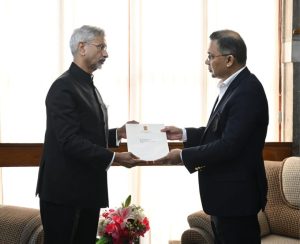Probing Punjab’s NRI marriages & brides’ desertions

By Pradeep Kumar Panda
Bhubaneswar, June 17: Marriage is a universal practice across the world. It often carries strong socio-cultural ethos apart from plausible economic factor being a determinant.
In India, marriage is not just a sacrament of its socio-cultural milieu; it also embodies such pomp and show that Indian weddings have often been termed as “the Big Fat Indian Wedding”.
NRI marriages are particularly known for its overdose of glamour and extravaganza. “NRI marriages”, as generally understood, are between an Indian woman from India and an Indian man residing in another country either as Indian citizen (when he would legally be an ‘NRI’) or as citizen of that other country (when he would legally be a PIO – person of Indian origin).
In India, such marriages are often coveted perhaps due to the Indian’s common penchant for migration to the West whereby the married daughter and her family establish a connection with the NRI/PIO family.
However, these marriages are not always beautiful fairy tales. There are repercussions related to dowry and other kinds of harassment of married women in foreign countries like non-consummation of marriages, marriages of convenience, concealment of earlier existing marriage by the husband before marrying an Indian woman and lack of social security faced by an Indian woman on the foreign soil once the marriage is broken and ex parte divorces are obtained.
In India such cross-border marriages have earned a bad name. It is reported that women in such marriages have been ill-treated in so many instances that the brides are called ‘honeymoon brides, holiday brides, brides of cheat weddings, brides of fraud marriages, abandoned brides, brides of passport weddings, and so on.
Apart from violence, abuse, and desertion of women also takes place which can be extremely traumatic for the affected. In NRI marriages, infringement of rights occurs across the high seas, in transnational spaces, leading to psychological, legal, emotional, cultural, and economic issues spanning different nations.
NRI wife abuse and abandonment can occur anytime, before or at the time of marriage, during marriage, and also after the dissolution of marriage.
The numbers of NRI marriages vary across the country. Some regions have recorded very high cases. The cases are also more prevalent in northern India especially in Punjab, Haryana, Uttar Pradesh, Delhi and Maharashtra as available records show.
Besides the number of cases, what is even more alarming is the culture of silence on the issue. To break the silence and start the discussion, a thorough understanding of NRI marriage in India is required at the very outset.
Many authors observed that the desire for an NRI groom is high among prosperous households, defined by standard of living or the size of agricultural land. Apart from an expectation for better future for their daughters, lure for ‘foreign social security’ provisions are the compelling reasons.
Besides, an improvement in the chances of immigration for other members in the household through new family networking and tie-ups are added attractions particularly for households with lowest standard of living. The study pointed that the international out-migration and international marriages are firmly associated.
As the number of NRI marriages keeps rising, cases of fraud or disputed marriages are also often reported. The actual number of cases can also be higher than the recorded number as it is likely that many cases remain unreported.
‘Global Marriage: Cross-Border Marriage Migration in Global Context’, ‘Cross-border Marriage: Global Trends and Diversity’, ‘Cross-Border Marriages: Gender and Mobility in Transnational Asia’, ‘Asian Cross-border Marriage Migration: Demographic Patterns and Social Issues’, ‘Gender Trends in Southeast Asia: Women Now, Women in the Future’, etc., are some pertinent works on cross border marriages in Asia.
However, these studies are spread across Asia with focus on China, Japan, Korea and Taiwan. Let alone Punjab which is the focus area of this study, even India as a whole do not come in the studies as much as it should despite the fact that India records the highest cases of NRI “fraud” marriages in the world.
However, these studies establish some critical thoughts on such marriages. There is a strong undercurrent of economic, cultural and social motifs. The diaspora groom is often seen as culturally, socially and economically better off than his counterparts in his place of origin. The conventional attitude is that the marriage will bring the family of the bride at par with the socio-economic and cultural standing of the NRI bride.
The aspect of “abroad” usually associated with more developed countries as compared to the less developed ones of their country of origin plays a significant role in such marriage transactions. The roles of such aspirations have been pointed out in these studies.
A gender (prejudice) element has also been noted in ‘Cross-Border Marriages Gender and Mobility in Transnational Asia’. The idea that women of supposedly poorer background will get a better life in the richer family and country of the groom is also a significant factor while the willingness and conditions of the wives are often overlooked.
The studies also look at the aspect of violence often rendered invisible. While the violence women go through in cross border marriages are highlighted, a case is built to address such violence as gendered.
A study titled ‘Dynamics of International Out-Migration from Punjab’, carried out by the Centre for Research in Rural and Industrial Development (CRRID), Chandigarh, and InstitutNationaldÉtudesDémographiques, Paris have done a chapter on NRI marriages in India.
This remains an important study in this area especially for the field based survey for different regions. The study highlights the divided perspectives of the people about NRI marriage. It reveals that 50 per cent are in favour of NRI marriage despite the prevalence of fraud cases. It also highlights the percentage of such marriages in different regions and castes in Punjab.
The proceeding of the conference on ‘Issues Relating to NRI Marriages by the National Commission for Women (NCW)’ is an all-encompassing study on NRI marriages in India. The work tries to unpack the common issues of such marriages and present a country and state wise data. The initiatives of NCW, NRI Cell and other related government bodies are particularly discussed.
‘NRI Marriages and Abandoned Brides’, a memorandum submitted by Rakshak to the Ministry of Overseas Indian Affairs, Government of India, is a small but significant work on the issue. By using 10 years statistics of registered cases, it tries to address the common issues of NRI marriages and the limitations of legal mechanism to handle such cases.
It studied selected a few regions, including Doaba region of Punjab. Penchant for foreign countries, agriculture taking a step back in terms of remuneration and the prevalence of immigration racket are deemed crucial factors for the high rate of NRI marriages.
The study attempts to understand and highlight the issue from the aspect of migration that Punjab is anyway highest in the list in India. This work contributes to the much needed aspect “migration” as far as NRI marriages in Punjab is concerned.
The present study attempts to fill some of the gaps that have remained herein. It will further add on to the survey based study on NRI marriages briefly discussed in Nanda and Veron’s study. It also aims to take the discussion on crucial factors of the issue further forward. And most importantly, the study seeks to contribute in building more pro-active preventive measures to bring an end to this grievous social custom before more women’s lives are wasted.
Of the nearly 30,000 women deserted by NRI husbands, roughly 15,000 of them belong to the Doaba region. It is extremely important to address the issue of NRI marriage in India solely for the fact that India has the highest number in the world. This can be partly attributed to the fact that India is the second most populated country in the world. However, the number is still a staggering figure.
As of September 2009-31st December 2010, 416 cases (highest) were reported from India and the only 15 cases (second highest) were reported from USA (NCW, MOIA, 2011). It is indeed frightening. The importance of the study lies in the fact that it will address a not so widely discussed issue with detail analysis and take it out there in the public platform for all to evaluate and act upon.
A research article surmises what exactly happens in such cases of abandonment. “In most cases an NRI marriage is solemnized in India and the bride is then taken to her husband’s abode which is in the foreign land. Assuming at this juncture, an ex-parte divorce decree is obtained by the NRI husband in a foreign court.
Here, the Indian spouse is left helpless, deserted on Indian shores confronted with a matrimonial litigation of a foreign court, which she neither has the means or ability to invoke which often results in despair, frustration and disgust. The woman is denied maintenance in India on the pretext that marriage has been dissolved by a court in another country.
It is submitted that the jurisdiction assumed by the foreign Court as well as the grounds on which the relief is granted must be in accordance with the matrimonial law under which the parties are married or where the respondent voluntarily and effectively submits to the jurisdiction of the forum and contests the claim which is based on a ground available under the matrimonial law under which the parties are married.
In cases like the one given above, the repercussion of NRI marriage as such is more startling than we know. There are enough documented and reported cases available for perusal and make one realise the severity of the issue. An article in the Tribune says, “The list of women who have been duped by avaricious NRIs is unending”.
Women in certain societies, including Punjab, hardly have any economic or decision making authority. They are often “exploited at the hands of selfish parents and greedy husbands”. The article suggests, “The need of the hour is to inculcate a certain respect for women. From female foeticide, to total disregard of a daughter or a wife’s preferences and to the utter submission of our women, irrespective of education, are all symbolic of the abhorrence for the female species. Imagine English was made compulsory some years ago, only to facilitate marriage with NRIs and not with any other states (The Tribune).”
NRI marriage and victimization of the bride (women) is clearly a socio-cultural issue with question gender prejudice at the core of it. Hence, the study not only strives to annihilate the taboo aspect of it, but also define and place the issue on the right pedestal.
The gender aspect of the problem also needs to be addressed. And by doing so, a small step towards curbing a larger problem of marriage vis-à-vis women and their place in the Indian society will be readdressed.
Although there exists reports and articles, a failed marriage especially that of women is often perceived as a taboo in the Indian society. A wider discussion on this in the society including the victims and victimizer themselves is required. To do that, the element of taboo has to be first annihilated. And this is possible only when the issue in itself is turned into a healthy debate among the wider public.
Need of the hour is to conceive preventive measures against such cases. Interaction with the families who have been affected by NRI marriages having, both positive and negative outcomes, shall be conducted so as to envisage effective preventive steps. The study should incorporate narratives from those families and women who had the options for NRI marriages, but instead chose other alternatives. All these may lead to address the issue in effective manner.







